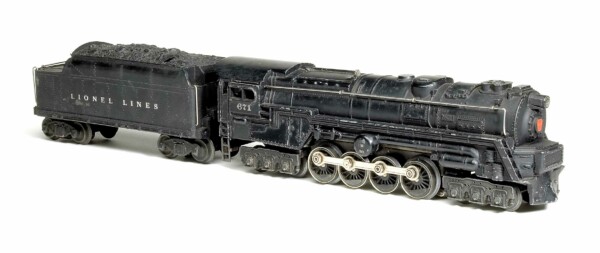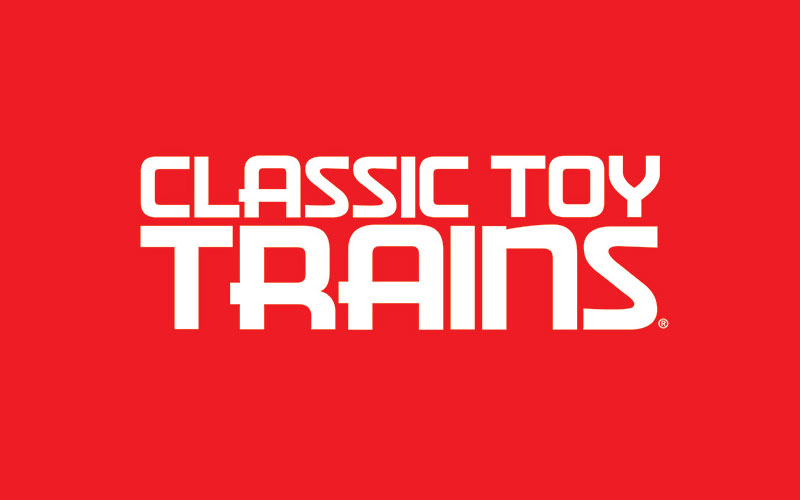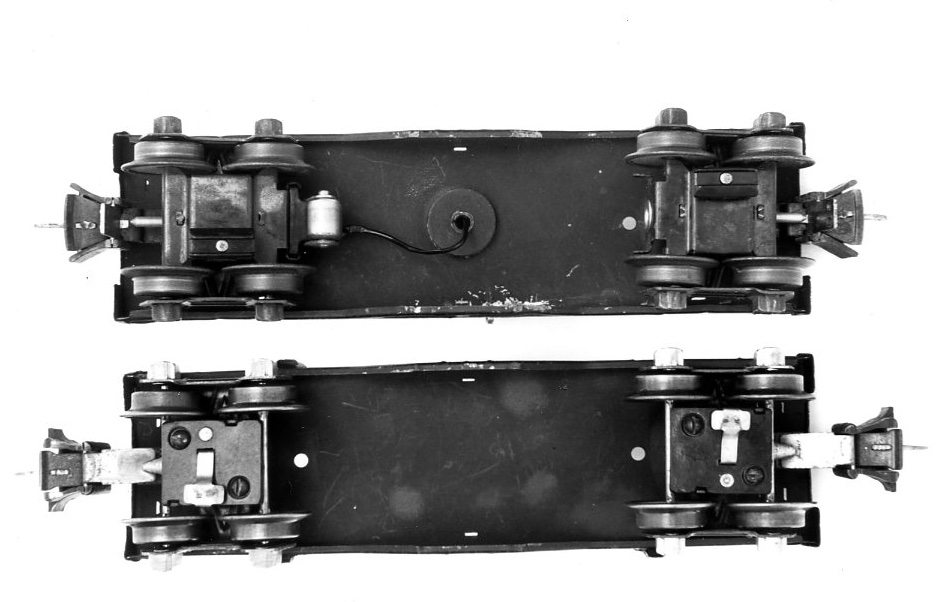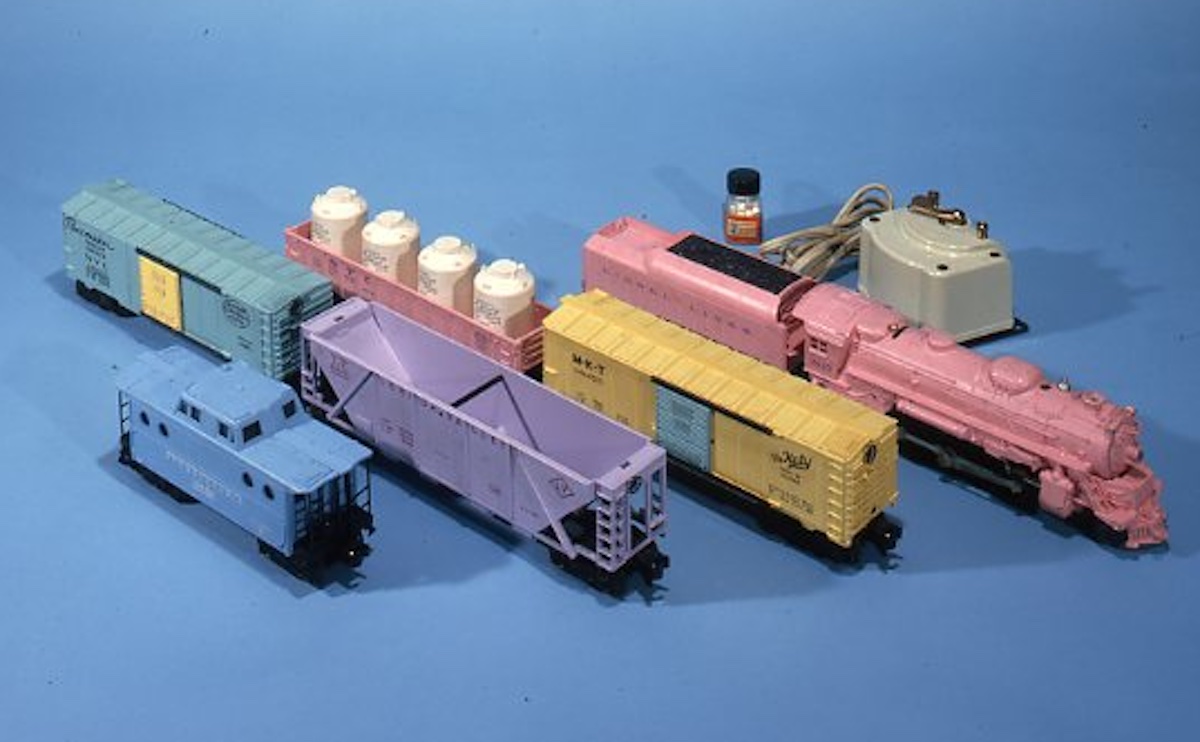The Lionel turbine locomotive has gone down in history as one of the model maker’s iconic products. From its success, reputation as a great runner, and longevity, you’d think the locomotive it’s based on was one of the greatest of all time.
It wasn’t.
The Pennsylvania RR S2
Lionel’s 6-8-6 is based on the Class S2 project by the Pennsylvania RR with Baldwin Locomotive Works and Westinghouse Electric & Manufacturing Co. The engine was designed to use a direct-drive steam turbine to move its train with very high efficiency.

The prototype, PRR No. 6200, was delivered in 1944. Testing at speed – including a run of 110 mph – revealed the locomotive was everything it promised – fast, powerful, and economical to operate. The problems came when it didn’t have clear track and had to run at a slower pace. Then, it used more fuel than conventional steam engines. Moreover, the lower speeds caused it to run too hot which spawned maintenance issues.
The railroad assigned it to some of its New York-Chicago passenger trains where it ran more than 100,000 miles. It suffered turbine damage in 1949, went into storage, and met the scrapper’s torch in 1952.
Ultimately, the S2 was a victim of timing. The rise of diesel locomotives in the late 1940s brought the end of steam. The latter had been deemed too expensive by many railroads to continue operating.
The Lionel turbine locomotive
Executives at Lionel, bewitched by the publicity the PRR’s turbine had received at its splashy debut in 1944, pressed ahead with a replica to showcase as their first entirely new postwar engine. They were so confident about the model they decided nearly identical versions would be valuable additions to both the O and O-27 rosters for 1946.
“The new, handsome powerful Lionel 20-wheel Pennsylvania steam turbine locomotive,” as it was anointed in the consumer catalog, thrilled for a handful of reasons. It was driven by a horizontally mounted Lionel Precision Atomic Motor in tandem with a worm shaft that turned two axles with worm wheels. Spur gears linked the worm shaft with the motor shaft.
Designers packed the die-cast boiler shell so tightly with drive gear that the reverse unit couldn’t be mounted vertically. Consequently, it had to be laid flat with a plug-and-jack arrangement in the cab to handle lockout functions.
Another challenge for the Engineering Department was getting a model with 20 wheels to operate on O-31 track. The flanges from the middle two drivers on each side were omitted. This helped the turning radius at the expense of pulling power, disappointing some owners.
One more drawback to the turbines released in 1946 related to the smoke mechanism. The pioneering achievement from Lionel fell short due to its reliance on a special bulb used to heat the smoke pellet while serving as a headlight. Never did the unit work as advertised to generate thick clouds of smoke.
Want to know what your Lionel 671, 681, 682, 0r 2020 turbine is worth?
Making it better
Over the next few years, improvements were made to the 671. Starting in 1947, engineers substituted a single worm drive for the double one. The updated design powered only the rear drivers and put the worm on the motor shaft. Those changes shifted the motor to a 30-degree angle, leaving more space so the reverse unit could be installed vertically with a lever slot in the body shell.

The smoke unit was upgraded with a heat coil installed in the boiler independent of the headlight. The heater also benefited from better smoke pellets.
Esthetic changes also took place. The thick nickel rims originally added to all drivers gave way to thin blackened ones on the first and fourth in 1948. Designers elected to remove all rims on the 671 for the final year of production.
Tenders paired with 671s were also upgraded. First was the No. 2466W, with a plastic prewar era shell housing the whistle. On its heels in 1947 arrived the No. 671W. Similar in appearance to the four-wheel 2466W, it had “Lionel Lines” rubber-stamped in silver or white across each side of the body.
A breakthrough came in 1948 with the new No. 2671W streamlined tender featuring a water scoop. “Pennsylvania” was rubber-stamped in silver or white on it. Better still, early versions of the 12-wheel tender had operating red backup lights.
Cataloged between 1946 and ’49, the O gauge version of the turbine underwent significant modifications until it rose to Lionel’s upper echelon of products. While only one real S2 was ever made, many thousands of the No. 671 and its postwar successors (Nos. 681, 682, and 2020) were produced.













